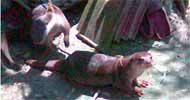
Fishing techniques based on using fishing gears (traps & nets) and crafts or by practicing any other ways, has been developed in different parts of Bangladesh. Gears and crafts, used in open water bodies are different from that used in closed water bodies. The reason behind developing particular fishing methods in open as well as closed water bodies are due to geographical differences, landscapes and fish population abundance.
Narail is one of the southern most district of Bangladesh. Most of the fishing methods have been developed based on open water bodies mainly river. In this area, fishes are mainly captured from open water bodies; but not regularly from the cultured water bodies. Typical fishing methods are still practiced at different parts of Narail such as Peruli, Gazirhat, Madoppasa, Bisnupur, Parbisnupur, Noagaon and Jamildanga. various types of fishing gears and crafts are found not only in the fishermen colony but also in every village house.
Some exceptional fishing methods and well known gears and crafts are described in the follows:
.
Fishing by Otter:
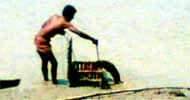
Animal fishing is the most ancient technique. In the past, man used domesticated and trained animal for this purpose. In Norail the aquatic mammal otter is used in fishing. The otter lives on fishes. While fishing, otters are carried on fishing boats in bamboo cases, or brought directly to the bank of river and are tied with ropes around their necks. The fishermen release the otter in water and operate them with the tied ropes of their neck. The otter swim in the water to find live fishes. They capture fishes by predating using their claws and sharp teeth. Then otters are forced to return back by the fishermen to fishing boats with captured fishes. This process is used by the local people in capturing fishes for feeding purpose of the families only.
.
Kepla jal:
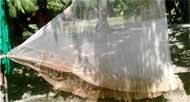
Kepla jal is a kind of cast net, which is the most familiar fishing gear used in all types of water bodies. It is also called Jhaki or Betka jal at different regions of Bangladesh. It is a bell shaped net; the bottom is a circle of 6-12 m diameter. The net may be about 3.6-6 m in height, gradually forming a cone at the apex. The mesh size of the net is 0.6 to 7.5 cm. It may be weaved by natural or artificial twines. It is a hand operating net, which can be thrown and operated by a fisherman alone. It is used locally for fishing throughout the year, but mainly in the rainy season.
.
Chandi or Sandi jal:
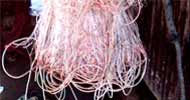
It is a set gill net, mainly used in fishing of Hilsha during May to October. The net is designed for large open water bodies. The net is used for fishing as Shylong, Rui, Catla, Mrigel, Kalbasu, etc. It is made of several rectangular shaped 11-12 m pieces; jointed together. The mesh size of the net is 1.75 to 5 cm. Both sides of the net are locked with heavy nylon ropes along with floats and sinkers inversely. The net is weaved with nylon and polyester fibers. The net is over water either hanged with bamboo poles from both the side, or can be operated with the help of boat. The set gill net is operated by 5-10 fishermen at a time.
.
Pungus jal:
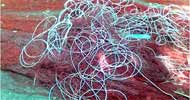
It is also a set gill net specially used for Pungus fishing, so is called Pungus jal. It is also used to capture large fish species like Aor, Boal, Carp, etc. It is 7-16 m long and 1-5 m wide. The mesh size is 5-7 cm. Sometimes a number of nets are jointed to cover a large water area. It is placed at the opposite direction of the tide and operated with the help of at least two boats at a time. It can also be placed by bamboo poles at the middle layer of the water bodies.
.
Shangla jal:
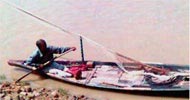
It is a skimming net, also known as Kosh jal, Ilish jal, Leoua jal, etc. It is bag like structure, 4.6-9 m long and 2.1-6 m wide. The mesh size of the net ranges from 2.5 to 7.6 cm. It is weaved by monofilament nylon or polyester fibres. Sinker is added to the opening edge of the net. It can be operated by haul and feeler cord with the help of boat.
.
Talal Dingi naouka:
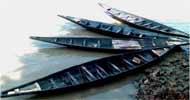
Talal dingi naouka is a common fishing craft of this area, which is also used in rural areas of Bangladesh. The boat is about 6-10m long, 0.8-1m wide and 0.5-0.8cm in depth. The boat is made of special kind of woods like Gamari, Capalis, Balam or Jarul and the deck is made of Shupari wood or bamboo. Both corner of the boat is longer and sharpened than other fishing boats. No awning and sail attached to the boat. The capacity of Talal Dingi naouka is almost 0.5-1tons.To operate the boat 2-3 fisherman is needed. The boat is used to operate different fishing nets, like Aton jal, Dora jal, Chatka or Pungus jal, Honga jal, Shangla jal and Baur jal. The boat is roaming mostly in the open water during September to November.
.
Tubo :
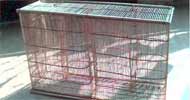
Tubo is a fishing trap use for capturing Shingi, Koi, and Punti during the period of June to November. It is rectangular in shape and closed type. It is made of bamboo sticks, cane and nylon twines. The trap contains three valves (Ghai) at the both extended opposite sides, for entering fishes. An opening is present at the side of the trap for collecting captured fishes. The mesh size of the trap is 0.2-0.5 cm X 0.2-0.5 cm X 1-1.5 cm.
.
Ghuni:
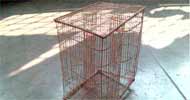
The box shaped trap is used for capturing small fishes. This trap is used in association Bana or barrage traps. The trap is a closed trap in which there are two valves at the opposite side of the trap, and a partial opening at a side. The mesh size is about 0.2-0.5cm X 0.2-0.3cm. It is made of bamboo sticks and nylon twines.
.
Coto Doair:
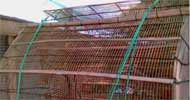
It is a triangular trap, is also called Rabani in certain parts of Bangladesh. It is a special shrimp trap and made of bamboo sticks, cane and nylon twines. It has two valves and an opening on the upper side of the trap. It is placed in water at night and removed from water at the very dawn.
.
Acknowledgement:
The authoress acknowledges with due respect to Dr. Selina Perween of the Department of Zoology, University of Rajshahi for editing this writing.
Visited 4,186 times, 2 visits today | Have any fisheries relevant question?
